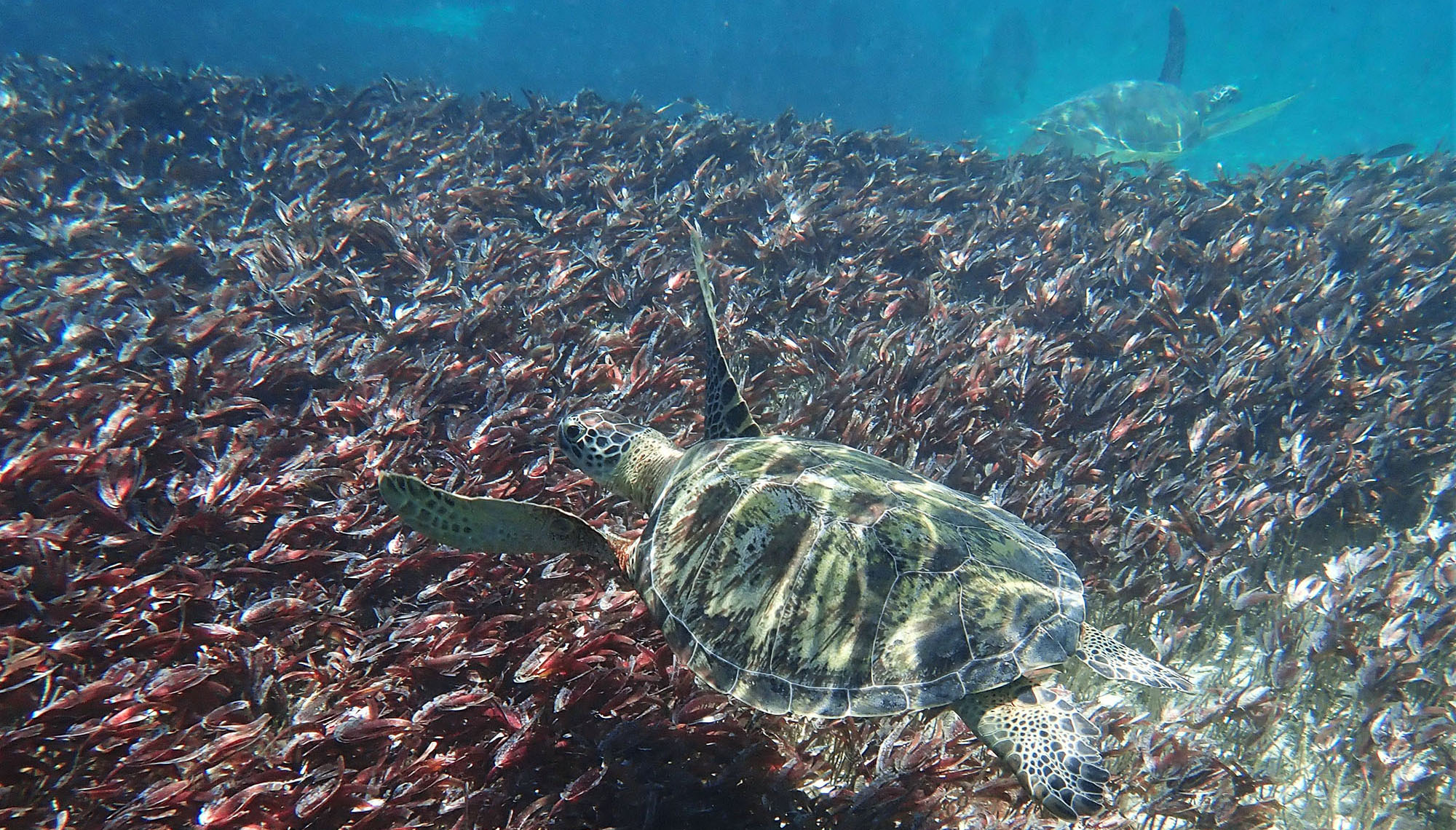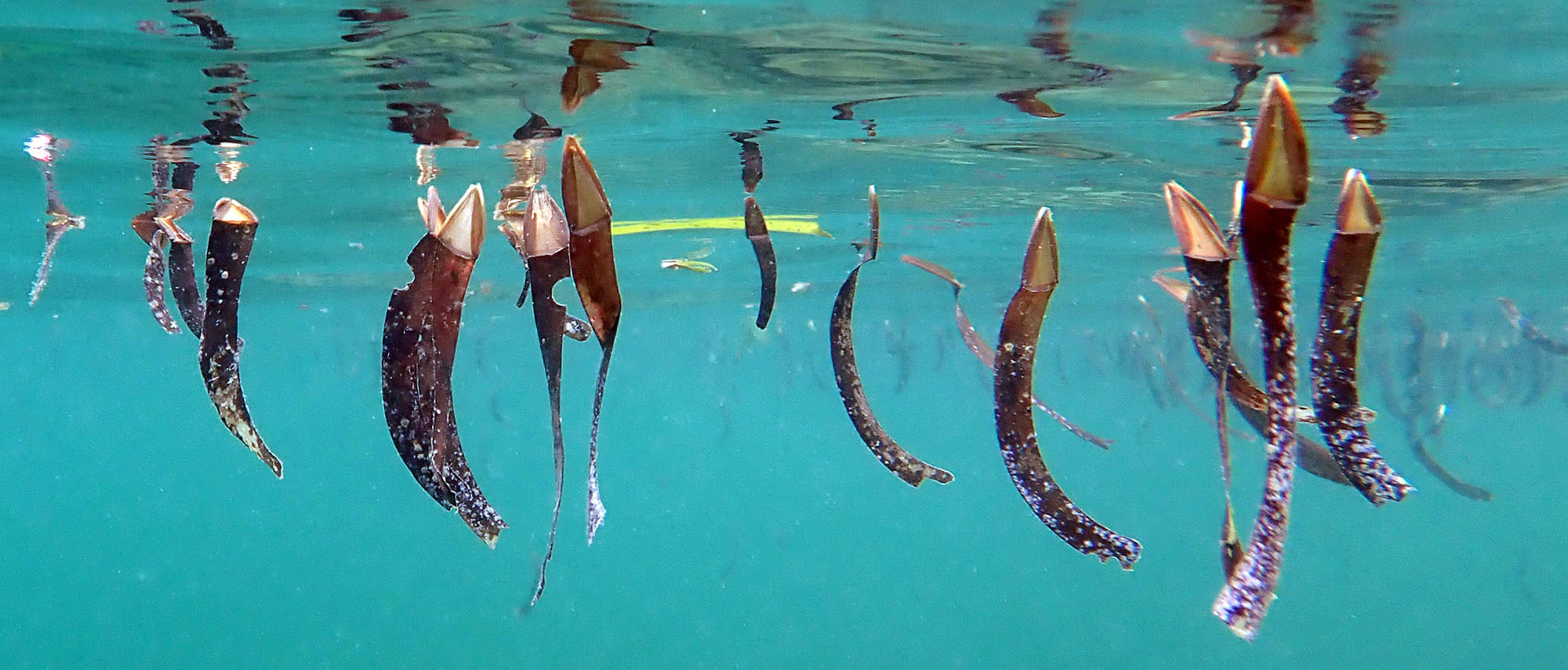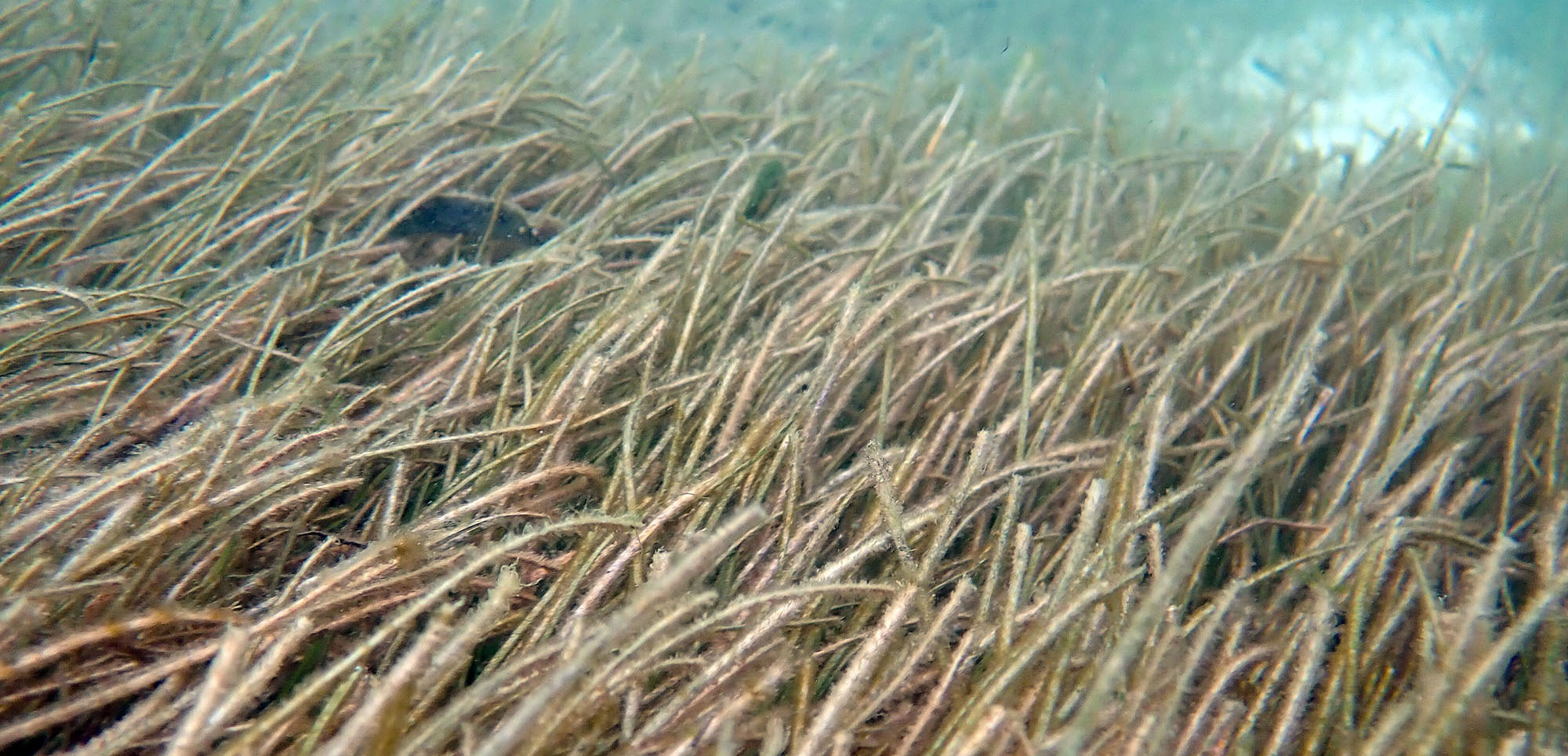ecosystem-guides.com
....exploring the planet's ecosystems
Tropical
Sea Grass Meadows
The sea grasses that grow in 'meadows' off tropical coasts are often overshadowed by their more glamorous coral reef neighbours, but they are worth a snorkel!
 Sea Turtles above sea grass, (Cosmoledo, Seychelles)
Sea Turtles above sea grass, (Cosmoledo, Seychelles)Small green blades of brown or green grass-like plants may be seen floating on the surface of the ocean within coastal areas. These belong to ‘seagrass’, of which there are about 60 species around the world. Although they look like the algae seaweeds, the ‘seagrasses’ are in fact true flowering plants. Thus, they have roots, true leaves, and produce flowers and fruits. They are not closely related to the terrestrial grasses, and in fact the various species are not necessarily related even to each other, being spread over five families.
 Sea grass blades broken off and floating in water (Alphonsa, Seychelles)
Sea grass blades broken off and floating in water (Alphonsa, Seychelles)The flowers of seagrasses are tiny and the pollen is distributed through water currents, (rather than air like the terrestrial grasses, or animals like many tropical land-based plants). Recently, one species has been found to use crabs and polychaete worms to transport sticky edible pollen. The leaves are often covered in a film of tiny single-celled photosynthesisers, such as cyanobacteria and algae diatoms, And although they appear as dull and rather monotonous seabeds, the amount of grass and other algae growth allows a large range of tiny critters to survive within their ‘meadow’ communities.
 Sea grasses covered in other organisms, (Indonesia)
Sea grasses covered in other organisms, (Indonesia)When conditions are right, seagrasses can grow quickly and are thought to be among the most productive communities in the world: they can grow one kilogram of material per square metre every year. This material feeds large grazing marine animals such as Dugong and Sea Turtle (image below).
 Dugongs can be found munching their way through sea grass beds (Shark Bay, Australia)
Dugongs can be found munching their way through sea grass beds (Shark Bay, Australia)where to find...
Tropical sea grass meadows grow on shallow water throughout the tropics. They are often grow along beaches outside small villages across the Pacific Ocean, and seem very common off islands in the Indian Ocean.
to search this website (and the internet):
Your second block of text...



